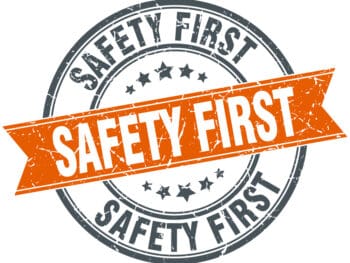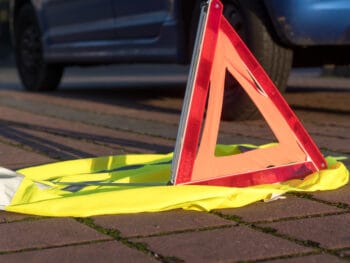Many workplace accidents occur because of improper lifting techniques. Workplace lifting may cause employees to suffer from back sprains, muscle pulls, wrist injuries, elbow injuries, spinal injuries and other injuries. For example, nursing homes have a high rate of back injuries because of improper lifting mechanics when moving patients. Lifting loads heavier than about 50 pounds increases the risk of injury.
According to OSHA, shoulder and back injuries accounted for over 36 percent of injuries involving missed workdays in 2001. Overexertion and cumulative trauma were the biggest factors in these injuries.
Avoid Repetition
Holding items for a long time, even if loads are light, increases risk of back and shoulder injury, since muscles can be starved of nutrients and waste products can build up. Repeatedly exerting, such as when pulling wire, can fatigue muscles by limiting recuperation times. Inadequate rest periods do not allow the body to rest.
Avoid Awkward Postures
Another cause of lifting injuries is awkward postures. Bending while lifting forces the back to support the weight of the upper body in addition to the weight being lifted. Bending while lifting strains the back even when lifting something light. Bending moves the load away from the body and significantly increases the effective load on the back, which increases stress on the lower spine and fatigues muscles. Reaching moves the load away from the back, increases the effective load, and strains shoulders. Carrying loads on one shoulder, under an arm or in one hand creates uneven spinal pressure.
Lifting Basics
When lifting, your workers should remember these basics:
• Hug the spine– Move items close to your body and use your legs, especially when lifting an item from a low location. Keep your elbows close to your body and keep the load as close to your body as possible. Do not start a lift below mid-thigh nor end the lift above shoulder height.
• Bend the knees
• Don’t bend over– Minimize bending and reaching by placing heavy objects on shelves, tables, or racks.
• Keep legs a proper width apart
• Avoid twisting, especially when bending forward while lifting. Turn by moving the feet rather than twisting the torso.
• Assess the item for size and weight before beginning to lift. Break down loads into smaller units and carry one in each hand to equalize loads. Ask for assistance or use lifting assistance devices such as hand trucks, forklifts, lift gates and ramps when necessary.
• Train all workers in use of lifting assistance devices and lifting mechanics. Provide back support belts.
• Use good housekeeping. Poor housekeeping limits proper access to objects and forces awkward postures. It increases the risk of a worker slipping or tripping while carrying or lifting objects.
• Use adequate rest breaks to avoid overexertion. Switch between tasks to avoid overexertion of certain muscles.
Author Rebecca Shafer, JD, President of Amaxx Risk Solutions, Inc. is a national expert in the field of workers compensation. She is a writer, speaker, and publisher. Her expertise is working with employers to reduce workers compensation costs, and her clients include airlines, healthcare, printing/publishing, pharmaceuticals, retail, hospitality, and manufacturing. She is the author of the #1 selling book on cost containment, Workers Compensation Management Program: Reduce Costs 20% to 50%.
Editor Michael B. Stack, CPA, Principal, Amaxx Risk Solutions, Inc. is an expert in employer communication systems and part of the Amaxx team helping companies reduce their workers compensation costs by 20% to 50%. He is a writer, speaker, and website publisher. www.reduceyourworkerscomp.com. Contact: mstack@reduceyourworkerscomp.com.
©2014 Amaxx Risk Solutions, Inc. All rights reserved under International Copyright Law.
Do not use this information without independent verification. All state laws vary. You should consult with your insurance broker, attorney, or qualified professional.







